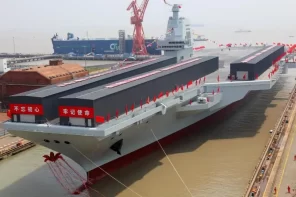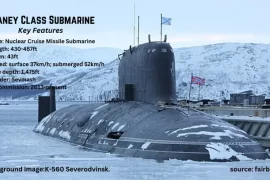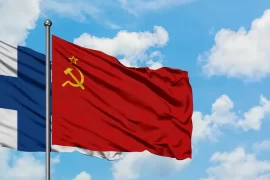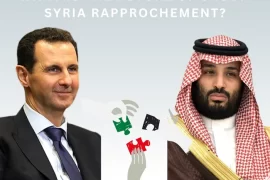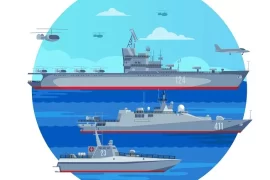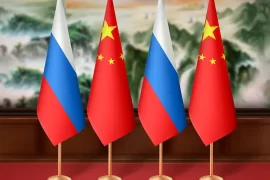Shortly after independence, the first UNP government passed the Ceylon Citizenship Act which denied citizenship to almost one million Indian Tamils. This effectively disenfranchised the Tamils working in the plantations. In 1948, the Indian Tamils amounted to around 11 per cent of the total population. In most of Sri Lankan history, thousands of Indian Tamils lived either as stateless people without franchise or as ‘registered’ Sri Lankans without having the same civil rights enjoyed by the Sri Lankans by birth. As early as 1939, the government laid off 2,518 Indian daily-waged workers in government service in an attempt to “Ceylonize” the country’s labor workforce. The market for unskilled labor, both in the plantation and in the urban sector, had been filled by these Indian immigrants and the Sinhala peasants became increasingly frustrated as they found penetrating the growing commodity sector to be quite challenging. The Sri Lankan economy was overwhelmingly dependent on the plantation sectors and the wealth of the political elite came from this sector. Disenfranchisement of the Indian Tamils therefore meant that the potential for organizing political movement in order to secure better pay or condition was well under control. It is also mentionable that during the 1947 elections, the plantation Tamils elected eight Tamil MPs who belonged to the left-oriented Ceylon Indian Congress. Elsewhere, the Indian Tamils helped the LSSP and CP MPs too. During the 1939 strikes and again in the 1946-47 general strikes, Indian Tamils demonstrated the political power of an aggrieved minority. By denying their citizenship rights, the UNP government was, therefore, able to reduce potential opposition and strength of the trade unions. The Ceylon Tamils, however, did not protest much as they considered the Indian Tamils to be a distant and alien minority. The government, on the other hand, justified the Act by propagating that Indian Tamils were a threat to the ‘Ceylonese nation’. Shortly afterwards, the Tamil Federal Party was formed under the leadership of S.J.V. Chelvanayakam and the party demanded federalism for the first time. The Indian-Tamil question ostensibly got settled in 1998 when R. Premadasa, the UNP presidential candidate, in an attempt to secure electoral support, drafted a bill granting citizenship to the remaining stateless persons. However, the bill never materialized entirely as it was revealed in 2003 that about 300,000 ‘stateless persons’ of Indian origins were still living in Sri Lanka.
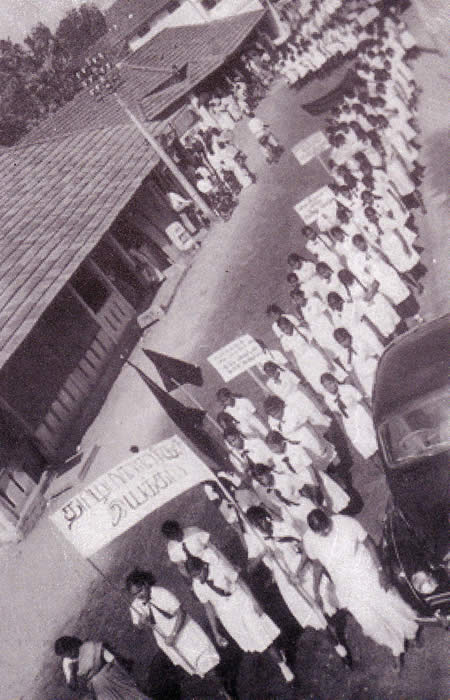
The ‘Sinhala Only’ law, the Rise of JVP and the Constitution of 1972
With the onset of the 1950s, Sri Lankan politics became more ‘communalized’, and the revival of Sinhalese Buddhist cultural nationalism inspired Colombo’s cosmopolitan politicians to manipulate the newfound mass politics among the lower-class and lower caste Sinhala communities. When the country’s first prime minister was killed in an accident in 1952, his son Dudley Senanayake succeeded him. Solomon Ridgeway Bandaranaike, a wealthy Anglican leader of UNP and minister of local government became convinced that his political ambitions would not be realized in such ‘dynastic’ politics. In 1951, he resigned from the cabinet, left the party and formed the Sri Lankan Freedom Party (SLFP). He even converted to Buddhism and championed Sinhalese nationalism. The SLFP triumphed in the elections of 1956 and Bandaranaike led a coalition government called the People’s United Front (Mahajana Eksath Peramuna, or MEP), comprising the SLFP and a section of the LSSP. The new government enacted a number of structural reforms in line with its nationalist and socialist platform. Beginning in 1948, the ruling elite believed that English had to be replaced by adopting Sinhalese and Tamil as two official languages of the country. Bandaranaike at first supported the cause of both Tamil and Sinhala as the national languages. But later, he secured support from the Buddhist Bhikkhus by enacting the ‘Sinhala Only’ law which made no reference to Tamil. As a result, Tamils in the public service, who spoke Tamil and used English in the workplace, felt marginalized. In response, on the day of the bill, the Federal Party’s leader S.J.V Chelvanayakam staged a satyagraha outside the parliament. The Federal Party also organized a convention in Trincomalee and adopted resolution demanding equivalence in status for Tamil and Sinhala. The other resolutions included demands for ending state-supported Sinhalese colonization of the traditional Tamil areas; creating autonomous Tamil linguistic states based on federal model and for bestowing citizenship and franchise rights to the hill country Tamils. Bandaranaike and Chelvanayakam formed a pact (known as B-C Pact) in 1957 which would allow Tamil to be the administrative language of the Northern and Eastern provinces in a federal Sri Lanka. But when the details of the B-C Pact were publicized, the UNP and pro-Sinhalese groups vehemently opposed it. The proposed Regional Council Bill envisioning the decentralization of the provinces could not even be tabled. The UNP leader, J.R. Jayewardene, the future President, led a Buddhist demonstration in Kandy which further provoked communal tension. Bandaranaike, under the pressure from a group of Bhikkus, had to abrogate the Bill in April 1958. In reaction, the Federal Party resolved to launch a non-violent struggle for the liberation of the Tamils. Ethnic riots followed in which over a thousand people were killed and many became homeless.
In 1958, a second attempt to placate the Tamils was made when the Tamil Language (Special Provisions) Act was introduced allowing Tamil to be the medium of instruction in schools, universities and in public service admission tests. Although Tamils would later have to qualify a Sinhala proficiency test, the Act nonetheless addressed some of the Tamil concerns. However, it was made clear that every clause in that Act was subject to proviso that it does not contradict the status of Sinhalese language as the official language of the state. The failure of both the UNP and SLFP governments to comprehend Tamil tribulations at such an early stage of the country was largely responsible for the future radicalization of the Tamil politics. In this atmosphere of political upheavals, S.W.R.D Bandaranaike was assassinated by an extremist Buddhist bhikku in September 1959. Bandaranaike’s widow, Sirimavo Bandaranaike, replaced him as leader of the SLFP and led the party to victory at the polls in July 1960. Sirimavo Bandaranaike became prime minister of Sri Lanka and pressed on with implementing the ‘Sinhala Only’ Act to the full. In response, the Freedom Party launched yet another campaign in 1961. To deal with the situation, the government declared a state of emergency and restricted Tamil political activism. Faced with declining support, Bandaranaike formed a coalition with the leftist LSSP in 1964. However, the right wing section of SLFP changed sides, forcing a general election in May 1965. The UNP secured victory, and Dudley Senanayake became prime minister a second time. However, having won only 66 seats, the UNP was forced to form a coalition with the Federal Party. In January 1966, the government introduced the Tamil Language (Special provisions) Regulations which had been proposed previously by the SLFP.
In 1968, the Federal Party withdrew from the coalition due to disagreements over the conditions of devolution that were put forward in a pact signed between Dudley Senanayake and Chelvanayakam in 1965. Leading up to the 1970 elections, the SLFP formed the United Left Front (ULF) coalition with the Communist Party of Sri Lanka (CPSL) and the LSSP. The ULF manipulated the government’s conciliatory policy toward the Tamils, particularly the attempted pact with Chelvanayakam, to win Sinhalese fidelity. In May 1970, the ULF gained a majority in parliament, and Bandaranaike again became prime minister. The ULF government soon faced economic crisis triggered by balance of payments deficits, rising foreign debts, and a costly social welfare and food subsidy program. The widespread dissatisfaction steered a radical-left Sinhalese youth movement, the Janatha Vimukhti Peramuna (JVP), which launched a rebellion in 1971 under the leadership of Rohana Wijeweera, largely aiming at killing “Westernized” Sri Lankans – politicians, security personnel or any Sinhalese who disagreed with the party’s radical-socialist ideology. However, in later years, JVP discarded the left-wing ideas and emerged as an ultra-right nationalist party. For them, the parliamentary democracy was an obstacle in the path towards radical reordering of the society, and the ‘mongrel’ Tamil and the Eurasian minorities were seen as threat for the pure Aryan blood of the Sinhalese race. The JVP members massacred many police officers and their families and in response, the government set up paramilitary forces which brutally suppressed the insurgency through extrajudicial revenge killings. The first counterinsurgency campaign by the inexperienced government forces cost 10,000-20,000 insurgents and sympathizers’ lives. One of the most far-reaching impacts of this bloody insurrection is that the government increasingly felt that the best way to respond to violent groups is employing counter-violence. The JVP followers went underground only to reemerge a few years later.
In 1972, the government ratified a new constitution that changed the name of Ceylon to Sri Lanka and, transformed its status from a dominion to a republic. It also declared that the ‘Republic of Sri Lanka is a Unitary State’. The constitution accorded primacy to Buddhism and reaffirmed the Official Language Act of 1956. Although the Soulbury Constitution had a clause on minority protection, the 1972 constitution ignored the issue altogether. The Tamil leadership was incensed by the government’s refusal to incorporate the provisions of the 1966 Tamil Language Regulations authorized by the UNP government in the 1972 Constitution. As a direct consequence of this development, the Federal Party, the Tamil Congress and the Ceylon Worker’s Congress (CWC) of Indian Tamils joined together to form the Tamil United Front (TUF), which in 1976, became the Tamil United Liberation Front (TULF).
The writer is Editor at Large of FAIR.

